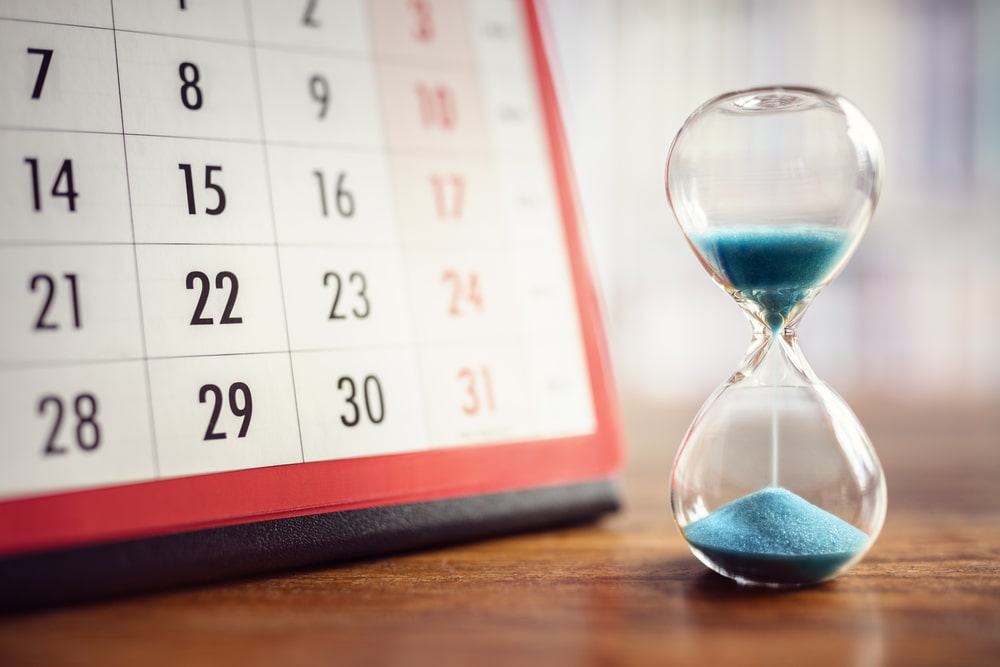As a real estate investor, it’s essential that you keep a pulse on the real estate cycle, both on macroeconomic and microeconomic scales, and know where we are in said cycle. The housing market cycle is closely tied to the general economy. Still, you can’t assume that the housing market is doing well just because the general economy is doing well or that the commercial property market has remained strong.
Real estate cycles are highly nuanced. However, the great news is that it’s possible to realize success as an investor no matter what phase of the real estate market cycle we’re in — there are strategies to help you make the most of each. Keep reading to understand how the real estate cycle works, the different phases, and how to best strategize in each phase.

What Is The Real Estate Cycle?
The real estate cycle is a four-phase series that reports on the status of both commercial and residential real estate markets. The four phases are recovery, expansion, hyper supply, and recession.
The origin of the term dates back almost one hundred years, as analysts first began to study trends within the housing market. As federal policy became more regulatory over the last century, the real estate cycle evolved slowing into what we have today.
This cycle can be used by a variety of real estate professionals to predict the right time to buy, hold, or sell. Investors commonly use the real estate cycle, but agents, buyers, renters, and others throughout the industry may find it helpful as well.
Importance Of The Real Estate Cycle
The real estate cycle can provide reliable information about the possible returns of an investment property. As an investor, you should determine if your property is in the recovery, expansion, hyper-supply, or recession phase of the real estate cycle. Doing so will allow you to make a more accurate assumption for the length of time the property must be held and the proper exit strategy to take. Additionally, the real estate cycle can predict the income and appreciation performance of an investment property. This will allow you to better decide when to make capital improvements.
The Four Phases of the Real Estate Cycle
The real estate cycle comprises four main phases: recovery, expansion, hyper supply, and recession. This implies that historically, there has never been a sustained expansion or hyper-supply period without an eventual recession, followed by recovery. This may induce some anxiety for you as a real estate investor, but fear not! The great news here is that investment strategies make it possible to invest successfully across these cycles.
1. Recovery
Identifying the recovery phase of the cycle can be tricky, as most of the nation will still be feeling the effects of a recession and have a bleak outlook. Rental growth will remain stagnant, with no signs of new construction. However, this is where real estate investors must keep a close watch and act quickly at any signs of recovery. This is a great time to pounce on below-market value properties that are in various states of financial or physical distress. You can wait out the rest of the recovery period by adding value to these properties so that they are ready to sell or rent outright as the economy shifts into the expansion phase. Timing is the key.
2. Expansion
The general economy is improving, job growth is strong, and there is an increased demand for space and housing. The expansion phase is when the general public will start regaining their confidence in the economy. Thus, the real estate market and individual renters and homebuyers will start generating demand once again. While the market is on an upswing, it’s advantageous to invest your efforts into developing or redeveloping properties that cater to the current market’s tastes and sell for more than market value.
3. Hyper Supply
Investors and developers get into a frenzy during the expansion phase to ensure that supply meets a growing demand. Inevitably, there will come a tipping point at which supply begins to exceed demand — either from too much inventory on the market or because of a sudden shift in the economy through which demand pulls back. As an investor, this is a time to hold strong. Property owners will often liquidate their inventory out of fear that their properties will go vacant or unsold. This is a great time to take an opportunistic approach; identify properties that you feel confident will perform well in the next real estate cycle. This is a great time to enlist the buy and hold strategy so that you have promising properties already in stock when it becomes an ideal time to sell again.
4. Recession
The recession phase is one we’re unfortunately all too familiar with. The great financial crisis of the early 2000s, followed by a sustained recession, left the entire nation reeling for many years. During the recession phase, supply exceeds demand by a wide margin, and property owners suffer from high vacancy rates. Also, not only is rent growth not present, some landlords are forced to offer reduced rental rates to attract renters who are also suffering from the economic downturn. As an investor, it’s a great idea to save up a rainy day fund for the next recession – this is not the time to sit back and feel sorry about the economy’s state. A recession provides the opportunity to purchase distressed properties at a deep discount. There will be an increase in real-estate owned properties, which are properties that have been foreclosed upon and repossessed by lenders. This is your opportunity to buy great properties with great savings. You can hold these properties (or add value if you see fit) so that they are ready to hit the market just as the economy begins to recover.

Factors Affecting the Real Estate Market Cycles
Several factors affect the real estate cycle, so much so that it’s nearly impossible to provide a concrete list. However, experts can collectively agree that the following factors are some of the main contributors:
- Demographics: The makeup of the population, and major shifts in this population makeup, can drive a market significantly. For example, the baby boomer generation’s retirement is expected to cause major shifts in the housing market, as many choose to downsize or move to vacation areas.
- Interest rates: Interest rates greatly influence potential homebuyers’ buying power. When interest rates are high, it could serve as a deterrent for many would-be buyers from buying. Conversely, when interest rates are low, it could encourage a spurt in home buying activity, as the long-term cost of financing a home is cheaper.
- General economy: The overall health of the economy is also a heavy-hitter when it comes to predicting the housing market cycle. Generally, when the economy is doing well or is in an upward trend, consumers feel more encouraged to buy residential real estate. They feel that their personal wealth will improve while placing a bet that their property’s value would continue to increase. Generally, if the general economy is doing well, the real estate market is also doing well. If the economy is sluggish, the real estate market also tends to follow suit.
- Government policies: The government will occasionally intervene with policies to help boost a market that is particularly sluggish or in a prolonged recession. Policymakers have the ability to implement tax deductions, subsidies, tax credits, and different homebuyer programs to incentivize consumers to purchase real estate. These types of governance mechanisms can greatly influence the US housing market cycle.
- Consumer confidence: Consumer confidence is simply the outlook consumers have of the economy, both in real-time and for the future. Investment deals and spending will be higher when consumer confidence is high, and it will be lower when consumer confidence is low.
The Economic Cycle
The economic / business cycle also has four phases, and the length of each phase can be drastically different. Calculating and predicting the economic cycle can be difficult due to seasonal changes, short and long-term trends, and other uncertainties within the economy. The four stages of the economic cycle are:
- Peak
- Recession
- Trough
- Expansion
How Long is the Average Real Estate Cycle?
Researchers have found that the average real estate cycle spans 18 years. However, the word “average” in this case is loose – real estate cycles are unpredictable, and some can last much longer than others. We are currently in roughly the tenth year of what experts call a bull market, where prices continue to increase. Over the last couple of years, many have predicted once and again that the bull market would slow, but we have yet to witness the slowdown. The real estate market is also evolving right now in the continued aftermath of the coronavirus pandemic.

How To Invest Based On the Real Estate Cycle
The real estate cycle does correlate with certain investment trends. That being said, there is no rulebook saying which strategy you have to follow (or noting exactly which phase of the cycle we are in, for that matter). Here are some common investment types based on the real estate cycle to consider:
- Recovery: Wholesale, rehabbing, buy and hold, multifamily investments, hard and private money lending all make great options during recovery. They key here is to keep an eye on rental demand to ensure your new investments do not remain vacant.
- Expansion: Buy and hold, multifamily and commercial acquisitions, and property development can be ideal strategies during expansion. Investors will often try their hands at new construction or redevelopment during this time while costs are somewhat low. Just make sure to keep an eye out for the next phase.
- Hyper supply: During a hyper supply phase, many investors like to stay put with buy and hold properties. Some investors may fear an upcoming recession and opt to liquidate certain investments — but it all depends on your reserves and current situation.
- Recession: Private and hard money lending and investing in foreclosures and bank-owned homes are great options here. Keep an eye out for signs of recovery to stay on top of the market, and remember that recessions are considered high-risk periods.
Note that many investors will have different prospectives on what phase of the real estate cycle we are in. Economists make careers out of analyzing the current financial environment — so don’t be afraid if you can’t fully decide where we’re at. Just remember to use what information you do have about the market to make informed investment decisions.
Summary
The real estate cycle is a concept that any real estate investor must understand if they strive for long-term success. All four phases of the cycle – recovery, expansion, hyper supply, and recession – cause the real estate market to shift significantly, so investors must stay on top of their toes if they hope to find opportunities in each. The great news is that there are strategies to remain vibrant and successful throughout the real estate market cycle, even if the economy feels sluggish. Your homework assignment is to sit down and create a long-term strategy for your business based on the concepts you just learned.
What phase of the real estate cycle do you think we are in now? What are some strategies you can use to take advantage of the current economic conditions? Join the discussion below.
Interested in learning more about today’s most lucrative real estate strategies?
READ ALSO: President Tinubu Suspends Emefiele
Source: FortuneBuilders




